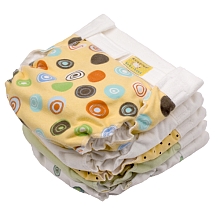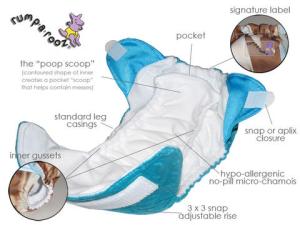 A few weeks ago, I read an article on the Mama Sweat blog about pelvic floor strength and not doing Kegels. Mama Sweat interviewed Katy Bowman, who is the director of the Restorative Exercise Institute. The article was fascinating, discussing why traditional Kegels can actually do more harm than good.
A few weeks ago, I read an article on the Mama Sweat blog about pelvic floor strength and not doing Kegels. Mama Sweat interviewed Katy Bowman, who is the director of the Restorative Exercise Institute. The article was fascinating, discussing why traditional Kegels can actually do more harm than good.
A lot of people were shocked by her revelation that our bodies are designed to work as a system, that “YOU REQUIRE YOUR BUTT MUSCLES!” One of the best quotes from the article is this:
“There aren’t any extraneous parts on the body! Every muscle is really a pulley that is holding your skeleton just so. When you let your glutes go, you allow the bones of the pelvis to collpase into themselves. The squat is the most effective and natural glute strengthener–using the full range of motion and your body weight. It is entirely more effective than any gym machine or contrived exercise. The hunter-gathering folks squat multiple times a day (or at least once in the morning), so they had a nice routine down over a lifetime. Doing this four to five times a day, every day of your pregnancy will improve the delivery as well!”
So what’s a girl to do? It can be confusing when you hear “do Kegels” and then the next day (bear with me, I know what I posted yesterday), you’re hearing “don’t do Kegels.”
Well, folks, there’s a reason that I posted Kegel exercises yesterday. Because you still need to do them. But you should not do them alone. Not as in Kegels-are-fun-to-do-with-a-partner, though I suppose that could be true. But as in, you should not be only doing Kegels and neglect to do other pre- and postnatal exercises. And not just 2 billion flex and release exercises per day either.
Pregnant mamas should be squatting like crazy (postpartum moms typically do this naturally chasing after babies). This is why your childbirth educator talked about it during the first week of class. Dr. Bradley wrote about it. Hunter-gatherer societies did it as part of everyday life. They squat. Squatting prepares your muscles to give birth. Not just your leg muscles. Squatting balances the kegel exercise – pelvic floor strength involves the glutes too! Even Katy Bowman said,
“Add two to three squat sessions throughout the day (anywhere). The glutes strengthen and as a result,they pull the sacrum back, stretching the PF from a hammock to a trampoline. Viola!”
Katy did a follow up interview with Mama Sweat on the topic, and you can read that here. I was very intrigued by what I read there. So I poked around on Katy’s website, katysays.com. It is filled with all kinds of wellness tips and exercises. Recently she posted more about the pelvic floor. Tips for women like not wearing high heels (it disrupts the allignment of the entire body) and, get this, not sitting on your sacrum!
That’s right, sit up straight. Have good posture. Your mother’s been right all these years. To quote Katy’s website,
“In addition to your pelvic floor muscles, your organs are also held in place by ligaments. One major ligament to the uterus is attached to the sacrum, so if the sacrum is pushed into your pelvic bowl, the uterus moves down. Even a diligent exercise program can’t override the constant and displacing physical pressure.”
The easiest way to avoid sitting on your sacrum? Get off the couch. Tailor sit (a.k.a. indian style) on the floor. Get an exercise ball for your desk. Didn’t your childbirth educator mention this one too? There’s a saying that the couch is the number one cause of c-sections today. While no studies have yet to be done on it (and, although there’s a measure of jest here), I’m pretty sure bad posture and it’s tie to pelvic floor strength could be a real contributing factor.
So, yes, Kegel on, but balance yourself (preferably on a birth ball) with tailor sitting, and squatting. Everyday. Ditch the high heels and the comfy couch. Your pelvic floor will thank you for it!




